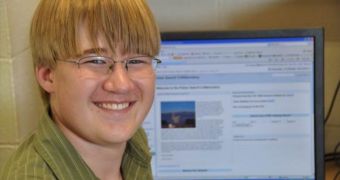While working on a project meant to help students in their analysis of astronomical data, West Virginia high school student Lucas Bolyard came across the signature of a very peculiar object, which he passed on to supervising astronomers. This happened in March 2009. After studying the object in greater detail, experts concluded that it must be a member of a rare class of astronomical bodies, known as a rotating radio transient (RRT). These are peculiar types of neutron stars, which emit bursts of radio waves, Space reports. Only 30 such objects have thus far been identified in the visible Universe.
Neutron stars are formed when massive stars reach the end of their burning cycle. Their core collapses, but they do not have sufficient mass to transform into black holes. The ensuing formations emit large amounts of neutrons, which are a class of subatomic (elementary) particles, known for their high energies. Rotating neutron stars are known among astronomers as pulsars, because they act like a cosmic lighthouse when viewed through a dedicated telescope.
Bolyard was a sophomore at the South Harrison High School, in Clarksburg, West Virginia, at the time of the find. He was working on the Pulsar Search Collaboratory, which is an important scientific project supported by the US National Science Foundation (NSF), and conducted at the National Radio Astronomy Observatory (NRAO), and the West Virginia University. The student was shifting through data collected from the giant Robert C. Byrd Green Bank Telescope (GBT) in Green Bank, when he discovered a signature that he almost classified as a glitch.
“I was home on a weekend and had nothing to do, so I decided to look at some more plots from the GBT. I saw a plot with a pulse, but there was a lot of radio interference, too. The pulse almost got dismissed as interference,” he said. After he passed on the information to supervisors, it became the task of West Virginia University astronomers Maura McLaughlin and Duncan Lorimer to re-examine the object in a follow-up study. The investigation revealed that the body was indeed an RRT, a find that was confirmed in July 2009.
“These objects are very interesting, both by themselves and for what they tell us about neutron stars and supernovae. We don't know what makes them different from pulsars – why they turn on and off. If we answer that question, it's likely to tell us something new about the environments of pulsars and how their radio waves are generated,” McLaughlin concludes.

 14 DAY TRIAL //
14 DAY TRIAL //